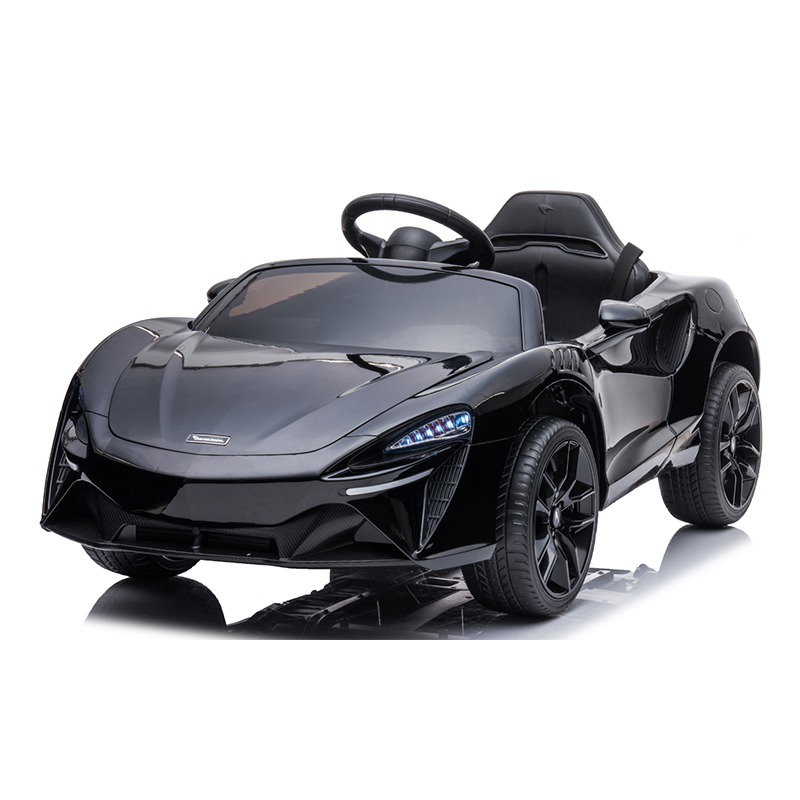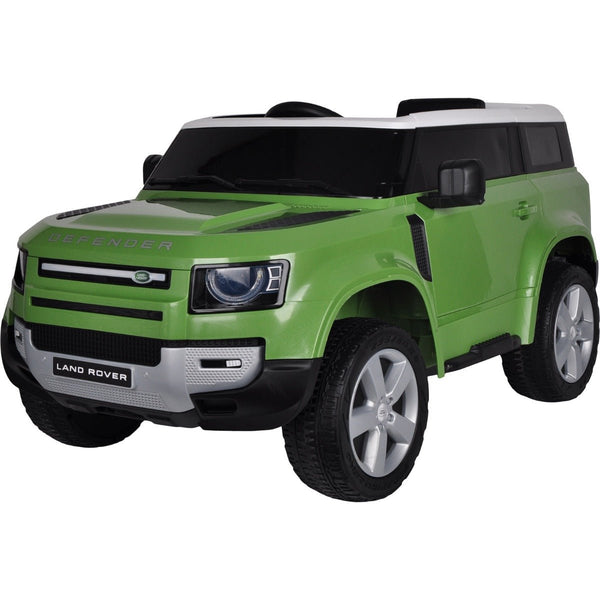Excellent News For Deciding On Electric Kids Cars
Wiki Article
What Do I Need Know About Battery Life And Charging Time Of An Electric Ride On Children's Car?
Understanding the battery time and life of a car that is electric is essential to ensure your child enjoys a fun and safe ride. Here's all you need be aware of about the battery type.
The majority of electric ride-on vehicles for children use rechargeable batteries, usually lead-acid or lithium-ion batteries. Lithium-ion batteries have a longer lifespan and a faster charging times compared to lead acid batteries.
Battery Capacity
The battery's capacity, measured in ampere-hours (Ah) or Watt-hours (Wh) will determine how long the ride-on automobile can operate on a single charge. Batteries with a higher capacity provide a longer playing duration before the need to recharge.
Run Time -
This is the amount of time that an electric ride-on will run for after one charge. This depends on a number of elements, including the battery, the motor along with the terrain and the weight of the rider.
The typical run time for electric ride-on vehicles ranges from 30 minutes and two hours. Certain battery packs with high capacity may offer longer run times.
Time to Charge
The charging duration refers to the time it takes to fully charge the battery once it has run out of fuel. The charging time varies according to battery capacity, charger specs and the charging method.
In general, the charging time for an electric ride-on car is between 8 to 12 hours. Some models provide faster charging times, particularly when using lithium-ion batteries.
To ensure safety and a long-lasting battery life, it's essential to recharge the battery in accordance with the manufacturer's instructions. Overcharging or undercharging the batteries can have a negative impact on their performance as well as longevity.
Charge Method Charge Method
Most electric ride-on cars include a charging cable which plugs directly into a household outlet. Some models may offer quick charging or even a smart charger that tracks the battery's charge status and adjusts charging rates in line with the state of charge.
To avoid damaging the battery or electrical system, ensure that the charger and the port on the ride-on are compatible.
Additional Batteries -
Some electric rides offer the option to purchase extra batteries or spare batteries to extend play time. If you have extra batteries in your possession, you can easily swap out depleted ones for fully charged ones to minimize downtime.
Understanding the battery and charging time of a ride-on kid's car will help ensure that your child and you have fun, uninterrupted playtime as well as thrilling adventures. Continuously charging the battery and observing proper charging practices will help maximize battery life and performance. Follow the top kids ride on cars for website examples including childrens digger, childs ride on car, 2 seater electric cars, ride on digger, car toy toy, kidscars, ride on digger, cars pedal car, toy cars toy car, two seater childrens electric cars and more. .

What Is The Reason And How Can Electric Ride-On Cars Cater To Different Levels Of Skill?
Children can have a great time and safe ride on electric ride-on vehicles that have various speed and control options. This is the reason and how these features are put into place - Safety
Different children have different levels of confidence and competence with regards to riding ons. With different speed settings, parents can alter the maximum speed of the car to match their child's abilities and reduce the chance of collisions, accidents or accidents.
The lower speed settings are suitable for children who are just beginning or who are still learning how to operate the ride-on car While higher speed settings are suitable for older children or those with more experience.
Gradual Learning Curve -
Children can gradually improve their driving skills with electric ride-on vehicles with multiple speeds. Starting at lower speeds helps beginners get their bodies with the controls and gain confidence before moving into higher speeds.
As the child's driving skills improve, parents can increase speed gradually. This provides them with an impression of progress and satisfaction.
Parental control
Certain electric vehicles come with parental controls that enable parents to restrict the maximum speed at which their child can travel. This feature allows parents to feel safe knowing that they can alter the speed of the car or intervene, if needed, in order to ensure that their child is safe.
Based on the model, parental control options could include speed limits on remotes and emergency stop buttons, or remote steering options.
Flexibility
As they grow and develop the children's interest and abilities can change. Electric ride-on vehicles that have different speed settings provide flexibility and adaptability to accommodate these changes over time.
As they increase their confidence and abilities as they gain confidence and ability, children can be elevated to higher speeds for an exciting and challenging experience. For children who are younger or have those with less experience parents might want to dial the speed down.
Customization
Multi-speed settings let you customize the ride experience according to personal preferences. Children can choose a speed that best suits their needs and also the level of excitement they desire.
Some electric vehicles have additional controls such as a variable braking and acceleration sensitivity. These features let you fine tune the sensitivity of driving to meet specific needs.
Overall, electric ride on cars that have multiple control and speed options offer an enjoyable, safe, and a personalised experience for kids. This is true regardless of age, level of ability or preference. These features help children develop confidence and develop their skills and also provide them with fun and exciting adventures. Parents can monitor and intervene as needed to protect their children. Take a look at the most popular go here on Audi ride on car for blog tips including car on ride, car toy car toy, ride on digger, toy and car, remote control childrens car, ride electric car, toy cars, electric ride along car, pedal car, remote control childrens electric cars and more. .

What Are The Alternatives For Remote-Controlled Cars For Children? What Are Their Pros And Cons?
Remote control children's cars are also referred to as remote controlled cars or RCs. They are available in a range of styles, price points and sizes that will suit all budgets and tastes. This article will provide a summary of the pros and cons, and sizes of remote-controlled children's cars.
Electric RC Cars – Batterie-powered remote-controlled cars that are suitable for both outdoor and indoor use. They come in various designs, including buggies, trucks and sports cars.
Nitro RC Cars – Gas RC cars that have faster speed and higher performance. They do require a greater amount of expertise and maintenance for operation. Electric RC cars are smaller and cost less.
Scale Models (Remote-controlled replicas) They are miniatures of real-life vehicles like airplanes, trucks or automobiles. Scale Models are available in a variety of scales ranging from 1-10 up to 1-24. Larger scales provide greater detail and an authentic appearance.
Sizes -
Remote control cars for children are available in various sizes. The range of sizes ranges from tiny replicas to huge-scale models. The size of a car can affect its performance and speed.
Micro-sized vehicles are compact and light. This makes them ideal to use indoors with smaller children. The larger cars have more power and are durable and are perfect for racing outdoors and off-road driving.
Prices
Prices of remote-control children's vehicles vary according to factors like size, features and brand.
Micro-sized electric RC cars can range from $20 to $100 While larger-scale electric and nitro RC vehicles can cost from $100 to $500 or more.
Scale models, high-end hobby RCs may cost from a few hundred dollars up to a whopping $1,000, depending on the quality of the model and performance.
Pros & Cons
Pros -
Entertainment - Children's remote controlled cars can provide hours of fun and entertainment for both adults and children.
Skill Development The use of RC vehicles aids in the development of hand-eye coordination, spatial awareness and problem-solving abilities.
Social Interaction. The RC car encourages social interaction and can be enjoyed by both friends and families.
Aftermarket parts including upgrades, accessories, and other products from the aftermarket can be used to modify many RC cars and increase their performance.
Cons
Costs - A car that is remote controlled for kids with the latest features or even hobby grade models can be expensive.
Learning Curve - Controlling an RC car requires practice and skills, and young children may struggle with the controls in the beginning.
Maintenance - RC cars require regular maintenance, including cleaning, lubrication, and occasional repairs or part replacements.
Safety Concerns – RC car safety could be compromised due to electrical hazards, collisions and other hazards in the event that the vehicles aren't controlled and used with caution from an adult.
Remote control cars for kids can be a fantastic educational and fun experience. However, it is essential to pick the correct model based on aspects such as size, safety, price and features. The hobby-grade RC vehicles may be better for older kids or enthusiasts. Less complicated models are better for beginners and younger children. Read the top rated kids ride on cars kidscars.co.uk news for more info including pedal car, car electric ride on, a toy car, childrens ride on, cars pedal car, two seater childrens electric cars, toy in car, toy and car, toy the car, cars pedal car and more. .
